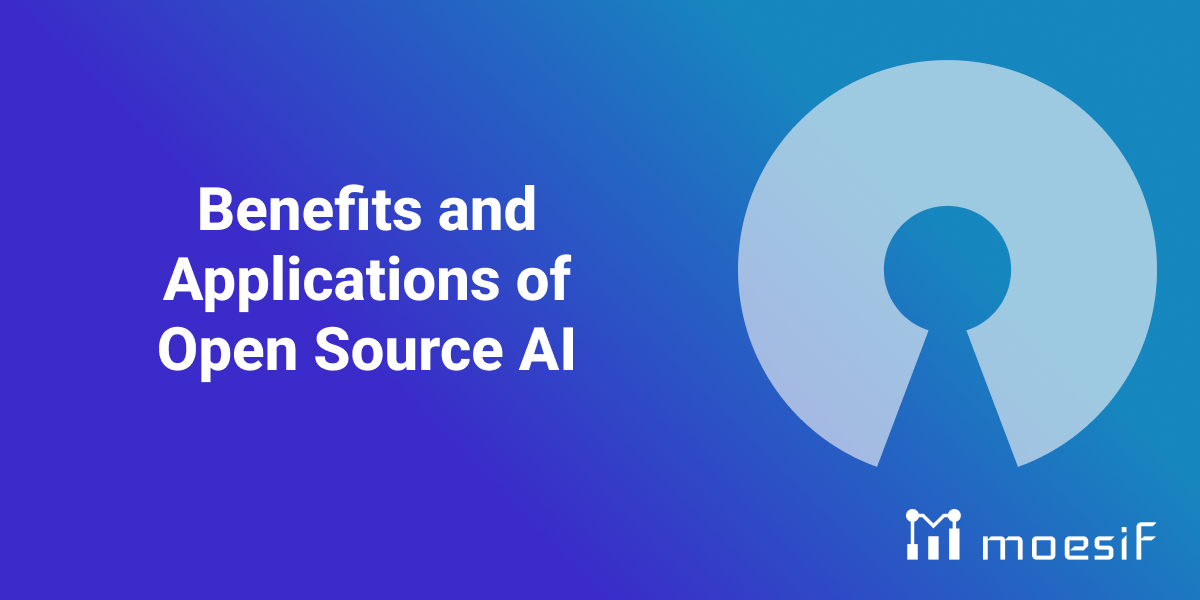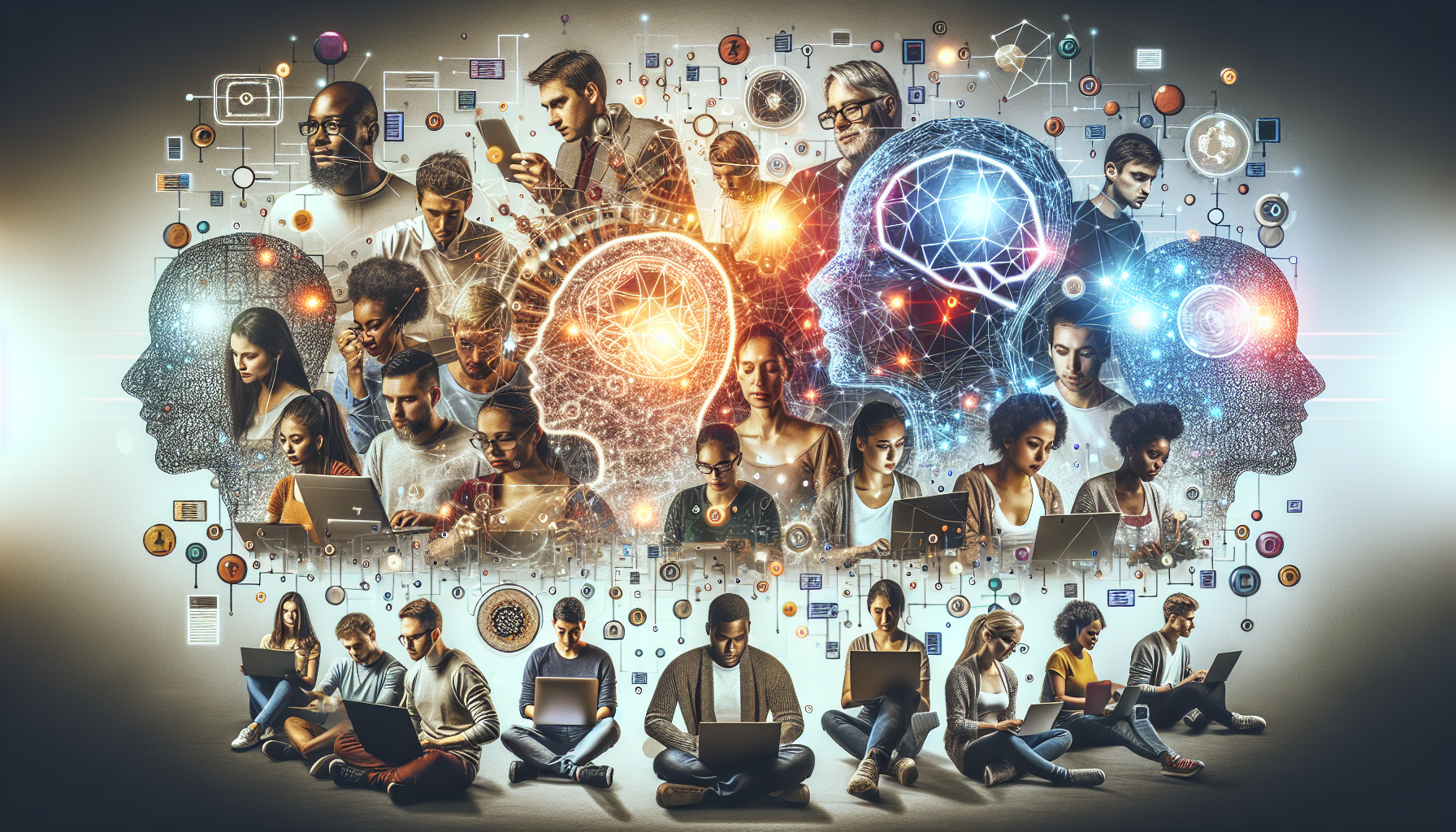Benefits and Applications of Open Source AI

The open-source philosophy and principles have always been about the democratization of knowledge—giving everyone the opportunity to access, learn, modify, and share software freely. As we see AI technologies seemingly taking over our day-to-day lives, we need those benefits in AI as well.
Open-source AI inherits the open-source principles. It fosters transparency and collaboration, allowing us to build robust and secure AI systems.
In this article, we break down the benefits of open-source AI, highlight key contributors, and explore its applications across industries.
Key Takeaways
- Open-source AI enables transparency, collaboration, and rapid development, with major contributions from key players like Meta, Amazon, and NVIDIA.
- The benefits of open-source AI make it increasingly attractive for various industries. These benefits include cost-effectiveness, security through transparency, and robust community support.
- Popular open-source AI tools such as TensorFlow, PyTorch, Keras, and Apache MXNet drive diverse applications in healthcare, finance, and retail. However, these tools may pose challenges in integration and maintenance.

Understanding Open Source AI
Open-source AI refers to artificial intelligence technologies that have publicly available source code. Therefore, users can view, use, modify, and distribute the source code to anybody and for any purpose. Unlike proprietary AI models that maintain certain levels of secrecy, open-source AI thrives on transparency, accountability, and collaboration. Major players like Meta, Amazon, and NVIDIA are continuously pushing the boundaries of what open-source AI can achieve, making it increasingly competitive with closed models.
But what exactly defines open-source AI? How did it evolve to its current state?
Definition and Core Principles
The term open-source AI lacks a universally accepted definition. What an AI system produces, unlike traditional software systems, doesn’t only depend on the code. This has led to differing views among experts about the scope and constitution of open-source AI. Despite the different views, the core open-source traits in the artificial intelligence space largely mirror those we observe in non-AI open-source software.
AI systems learn and evolve based on data, not just the code and implementation details. This makes defining “openness” more complex than traditional software. Therefore, experts debate on whether open-source AI should include both the training data and the models, or just the code behind model implementations.
Despite the different views, the open-source artificial intelligence space largely follows the core open-source principals:
- Publicly released source code.
- Allows anyone to use, examine, modify, and redistribute the software and source code.
Adopting open-source principles in artificial intelligence systems enables developers worldwide to contribute and improve AI systems. It brings healthy competition and promotes transparency. Open sourcing AI systems also makes AI more accessible in the global economy and helps achieve the democratization of AI.
Historical Context
In the early days of high-performance computing, proprietary Unix versions dominated the landscape. The rise of open-source Linux, eventually becoming more advanced and widely supported, set a precedent for open-source technologies.
Open-source AI is following a similar trajectory. Models like Meta’s Llama series are rapidly closing the gap with proprietary counterparts. Meta’s collaboration with companies like Amazon and NVIDIA highlights the growing ecosystem supporting open-source AI development.
Key Players in Open Source AI
Tech giants like Amazon, Databricks, Meta, and NVIDIA are contributing to the open-source AI landscape in unique ways.
Meta
Meta (formerly Facebook), with its Llama models, has been a significant force in driving open-source AI forward. Meta also develops and releases PyTorch, a widely used deep learning framework. Meta has open-sourced numerous AI models and tools, including libraries for natural language processing (NLP) and computer vision.
Amazon
Amazon has made active contributions to open-source AI through initiatives like DJL (Deep Learning Java), a framework for deep learning development in Java. Amazon continues to contribute to and invest in open-source AI projects. Amazon Web Services (AWS) provides infrastructure and services for developing and deploying AI systems. They also offer managed services for popular open-source AI frameworks like TensorFlow and PyTorch.
Databricks
Databricks, with its expertise in big data and machine learning, has made significant contributions to open-source AI. Databricks develops the open-source Delta Lake storage layer for data lakes. To help build better models and GenAI (generative AI) applications, Databricks has also developed the open-source platform MLFlow.
NVIDIA
NVIDIA plays a significant role in open-source AI by developing optimized libraries and tools to accelerate AI workloads on GPUs. NVIDIA has also developed NeMo for generative AI and project MONAI, a PyTorch-based framework for deep learning in healthcare imaging.
Benefits of Open Source AI

The multifaceted benefits of open-source AI have made it an attractive option for organizations across various industries. For example:
- Cost-effectiveness
- Transparency
- Robust community support
- Avoiding vendor lock-in
- Flexibility to select the most suitable tools
- Encouraging innovation
- Propelling collective advancements
Let’s try to understand how these benefits contribute to open-source AI’s growing popularity.
Cost-Effectiveness
Open-source AI can prove very economical and save valuable resources over time. Unlike proprietary solutions, developers can modify the code freely, reducing development and maintenance costs. Small development teams can leverage existing libraries and focus on creating customized solutions.
This affordability and adaptability allow organizations to maximize their resources without compromising on quality.
Transparency and Security
With publicly accessible source code, developers can scrutinize the system, identify vulnerabilities, and address them efficiently. This open approach allows organizations to quickly detect and fix security flaws, making open-source AI models inherently more secure than their closed counterparts.
Additionally, AI models for commercial purposes must meet strict standards. Open-source AI, due to its inherent nature, can easily achieve compliance with transparency and accountability requirements—for example, the EU AI Act.
Community Support and Collaboration
Open-source AI harbors a vibrant community of developers who brings continuous improvements through collective efforts in the AI space. Platforms like GitHub have become homes of numerous AI projects. These platforms have fantastic developer tools and robust support for troubleshooting and development of AI.
Developers can now fine-tune models with their own data and avoid vendor lock-in. Thus open-source AI fosters a sense of ownership and empowerment. This community-driven nature ensures that an AI project remains at the cutting edge of technological advancements.
Popular Open Source AI Tools and Frameworks
We have a rich open-source AI ecosystem with powerful tools and frameworks that cater to a wide range of applications. Some of the most popular and widely used AI tools include:
- TensorFlow
- PyTorch
- Keras
- Apache MXNet
- OpenAI Gym
These platforms allow you to develop cross-platform solutions to create versatile and robust AI applications using multiple APIs.
Let’s examine these tools in more depth to understand their distinctive capabilities and roles in the AI space.
TensorFlow
Developed by the Google Brain Team, TensorFlow is a versatile and powerful open-source platform designed for machine learning using data flow graphs. Its features include:
- Flexible computational graph that supports diverse architectural designs.
- Compatibility with languages like Python and JavaScript.
- Both graph-based and eager execution options.
- GPU acceleration for faster and more efficient training of machine learning models.
These features make TensorFlow a popular choice for developers working on machine learning projects.
PyTorch
PyTorch is a popular open-source deep learning framework developed by Meta AI. Some of its features include an intuitive interface, ease of debugging, and dynamic computation graphs. The dynamic nature of its computation graphs allows developers to change network behavior on the fly for rapid experimentation. PyTorch’s GPU acceleration further enhances its efficiency, making it an ideal choice for both prototyping and deployment.
This flexibility and user-friendly design have cemented PyTorch’s reputation in both research and production environments.
Other Notable Tools
Beyond TensorFlow and PyTorch, several other AI tools play crucial roles in the open-source ecosystem.
- Keras is an open-source deep learning framework that simplifies building and training neural networks using Python.
- Apache MXNet stands out with its dynamic dependency scheduler and automatic parallelization capabilities, supporting multiple programming languages.
- OpenAI Gym is an invaluable toolkit for developing and comparing reinforcement learning algorithms.
Applications of Open Source AI in Various Industries

Open-source AI has found practical applications across a wide range of industries, demonstrating its adaptability and utility. For example, real-time fraud detection, medical image analysis in healthcare systems, and so on. These applications highlight the versatility of open-source AI platforms and their ability to transform industry-specific challenges into opportunities for innovation and efficiency.
Healthcare
AI-powered diagnostics, such as diabetic retinopathy screening, have proven to be both robust and cost-effective. Several AI-based systems for diabetic retinopathy have received regulatory approval, such as IDx-DR (now LumineticsCore) and Eyenuk’s EyeArt system.
Additionally, AI can automate precision imaging tasks like radiotherapy planning. This significantly reduces preparation times and improves patient outcomes.
By enhancing the semantic interoperability of health IT systems, AI facilitates more seamless data exchange and better care coordination. These advancements underscore the potential of open-source AI to drive innovation and improve the quality of healthcare services.
Finance
In the finance industry, companies leverage open-source AI for real-time fraud detection, algorithmic trading, and risk management. Companies like PayPal employ TensorFlow for deep transfer learning and generative modeling to detect complex fraud patterns. Algorithmic trading benefits from machine learning models that optimize buying and selling decisions based on market trends.
AI-driven risk management tools can enhance financial services in different ways:
- Assessing various risk factors through predictive analytics.
- Helping financial institutions mitigate potential losses.
- Improving security, efficiency, and decision-making.
These applications illustrate how open banking, open-source AI, and API aggregators based on open-source AI models can all modernize the financial industry through a coherent system.
Retail
The retail industry harnesses the power of open-source AI for inventory management, sales forecasting, and supply chain optimization. AI-driven inventory management systems can predict stock requirements and optimize supply chain operations, so that retailers can meet customer demand without overstocking. Open-source ERP systems like Odoo Inventory have embraced AI-powered forecasting and optimization.
Sales forecasting tools offer several benefits for businesses in the retail sector, including:
- Analyzing market trends and customer data.
- Providing accurate predictions for planning strategies effectively.
- Enhancing operational efficiency.
- Improving customer satisfaction.
Challenges and Considerations
To maximize the potential of open-source AI, it’s important to address the challenges and considerations that come along. Some of the key areas that organizations need to navigate include:
- Integration complexity
- Maintenance
- Updates
- Licensing and legal issues
By understanding these challenges, organizations can effectively implement and sustain open-source AI solutions. Let’s examine these considerations more closely to fully understand the challenges and how to overcome them.
Integration Complexity
Integrating open-source AI into existing systems requires distinct definitions, protocols, and development processes that differ from traditional software. The central role of data in AI system quality adds to this complexity, therefore requiring meticulous data management and integration strategies. As AI models become more sophisticated, identifying the source of specific insights can also become challenging.
Addressing these complexities requires a strategic approach that balances the need for innovation with the practicalities of system integration.
Maintenance and Updates
For long-term effectiveness and security of open-source AI tools, we must ensure proper maintenance and updates.
AI systems, with their numerous parameters and complex neural networks, pose unique challenges in understanding and explaining their decisions. The lack of transparency in the decision-making process can hinder trust and accountability. Therefore, making regular updates and maintenance becomes essential to mitigate these issues.
Additionally, AI-generated code introduces licensing, security, and regulatory challenges, so it’s important to stay vigilant and carefully audit the generated code.
Licensing and Legal Issues
The opaque nature of AI-generated code can make it difficult to determine its licensing status. Without proper license checks, companies may face potential infringement issues. Regulatory compliance, especially with laws like the EU’s AI Act, requires high-risk AI systems to adhere to stringent rules related to data governance, technical documentation, and risk monitoring.
To avoid legal pitfalls and ensure ethics and law, it’s crucial to align open-source AI implementations with these regulatory requirements.
Future Trends in Open Source AI

We’re observing exciting developments unfold in the artificial intelligence space. Trends like AI democratization, enhanced interoperability, and ethical AI development are driving the AI evolution. These trends reflect a broader movement toward making AI more accessible, interconnected, and responsible.
AI Democratization
AI democratization aims to expand access to advanced AI tools and make them available to a broader range of users and industries. By democratizing AI, we can empower individuals and organizations beyond data scientists to use artificial intelligence.
By lowering the barriers to entry, AI democratization fosters a more inclusive and innovative AI landscape, where diverse perspectives contribute to the development and application of AI technologies.
Enhanced Interoperability
Enhanced interoperability focuses on creating seamless connections between different AI tools and platforms to facilitate smoother data integration.
We’ve seen the use of declarative languages and Git-based infrastructure as code (IaC) workflows increase significantly over the years. This has standardized cloud deployments, enhancing interoperability among different integrations. API aggregation plays a crucial role in this process by ensuring efficient data exchange and integration through the use of an API aggregator. In this context, a unique and standardized API development becomes essential for creating and maintaining these connections, as well as handling API requests efficiently with a single API.
Interoperability can help us build cohesive AI ecosystems where different technologies can work together harmoniously across various applications.
Ethical AI Development
Ethical AI development prioritizes fairness, transparency, and accountability. It strives to create AI systems that avoid bias, respect privacy, and explain their decisions. By keeping ethics as a major concern, we emphasize human well-being and societal impact throughout the design and deployment process.
Ethical AI development requires collaboration between researchers, developers, policymakers, and the public. It involves ongoing monitoring and assessment of AI systems to identify and mitigate risks. Ethical AI strives to empower people, not replace them, and ensure that technology serves society equitably and responsibly.
Developers are increasingly sharing tools for responsible AI on platforms like GitHub. This highlights a collective commitment to ethical considerations in AI development.
Summary
Open-source AI has become a transformative force that has ushered in a new era. From individuals, small businesses, to large corporations—everyone is adopting and investing heavily in open-source AI. Like other technology domains, the open-source philosophy have started to dominate the AI space, and for very good reasons.
Despite the benefits and positives, we cannot ignore the critical challenges in the ecosystem. New challenges may also emerge as we go forward. Therefore, continuously monitoring, understanding, and researching these problems for solutions bears just as much importance as investing in advancing AI itself.
For AI products or AI APIs, Moesif makes some of these challenges very easy to tackle by providing in-depth analytics of your product’s journey.
Moesif comes with a comprehensive suite of powerful analytics and monitoring tools. You also get access to robust monetization features so that you can grow your AI product with confidence. You can integrate Moesif easily with your favorite APIM platform or API gateway through one of our easy-to-use plugins. You can also directly embed Moesif into your API code using our SDKs. With Moesif at your disposal, your API’s lifecycle becomes robust, accelerating product growth.
To try it yourself, sign up today for a free trial, no credit card required.






